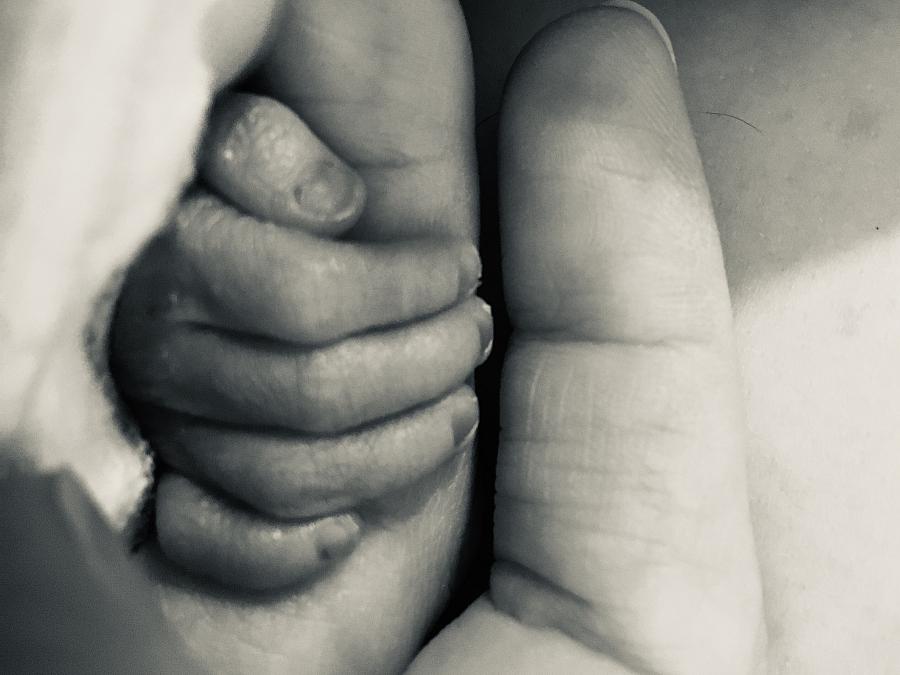Why we know so little about preventing preterm births

(Photo by Gabrielle Emanuel)
If you stand in the hospital and close your eyes, you’ll know just by listening if you are in Neonatal Intensive Care Unit (NICU). The high-pitched beeping of patient alarms is punctuated by strained infant cries.
NICUs are home to some of the most fragile patients. The littlest weigh barely more than a pound. But these patients also have the most potential – their whole lives are ahead of them.
Ten percent of all births in the United States are preterm. They account for 17% of infant deaths, and many of the early preemies that survive face both short-term and long-term developmental challenges. Despite the scale and severity of the problem, doctors know very little about what causes premature births and how to prevent them.
The price tag is staggering: Premature births cost $26 billion annually. The March of Dimes – the main philanthropic group dedicated to reducing prematurity – estimates the cost of each preterm birth at $65,000 in medical expenses, social services and lost productivity. In some cases, that number climbs into the millions.
Yet the investment in understanding and preventing premature births is shockingly low, according to researchers in the field. They say that behind these tiny lives are data that tell a disturbing story about how the U.S. has failed to invest in the health, well-being, and future of some of the most vulnerable among us. And that failure has resulted in needless struggle for millions of American families.
There is a clear need to explain what is happening and why.
My goal for my 2020 Data Fellowship project is to (1) quantify the limited resources that are dedicated to learning more about this costly issue, (2) examine the reasons why there is not more investment, and (3) explore changes that have the potential to funnel more investment to the area.
The first part of the series would use NIH RePORT data — which details NIH funding — to examine exactly how much money is dedicated to studying prematurity compared to other health issues. Does the investment in prematurity research reflect the cost of prematurity for society?
I also hope to draw a contrast between the amount of money dedicated to researching maternal health and preventing early labor compared to the resources funneled to researching premature infants and how to save them. A preliminary look at the data suggests far more money is dedicated to helping the children who arrive in the world prematurely rather than preventing their early arrival.
The second part of the series would examine exactly why there are not more resources dedicated to studying prematurity. One reason I expect to explore involves the fact that prematurity – and maternal or women’s health in general – do not fall under a specific institute at the NIH and, thus, it is much harder to receive funding. There is an institute for the eye and one for aging, but nothing specifically for women or maternal health.
Additionally, I hope to examine the impact of pregnant women being categorized as a “vulnerable” group requiring special research approval. Other groups with this same distinction include persons who are physically and mentally handicapped. Historically, this has been an impediment to studying prematurity. This categorization was changed during the Obama administration, which should enable me to explore whether more research was conducted — and funded — after the designation was removed.
Finally, the third part of the series would examine possible solutions and promising leads. This would include exploring political and legislative paths to encourage research – such as the “Cancer Moonshot Initiative” – and how certain places, such as Japan and Nordic countries, have significantly lower rates of prematurity. I also plan to examine preliminary data on the drop in premature births beginning with the COVID-19 lockdowns in the United States and Europe.
While this will primarily be a data-driven story informed by experts, the numbers will be woven together with science, policy, and the intensely personal story of families and infants navigating the treacherous first few months of life.

